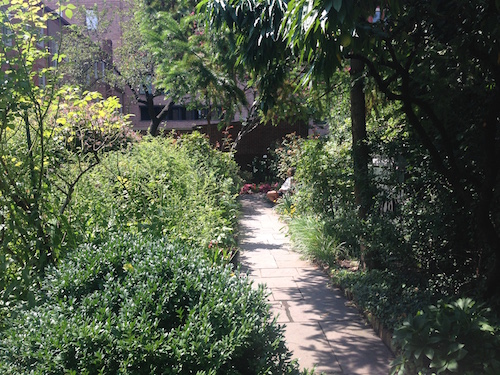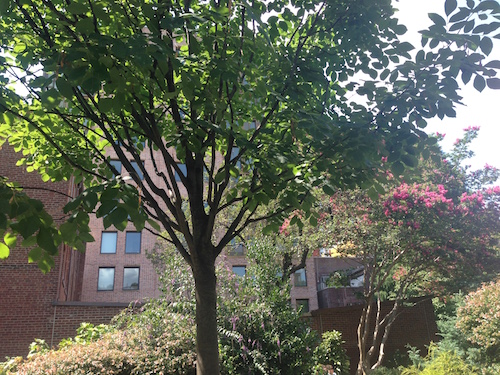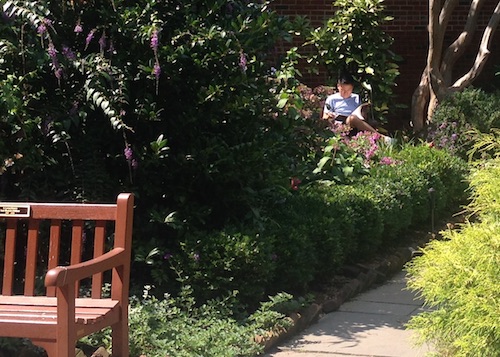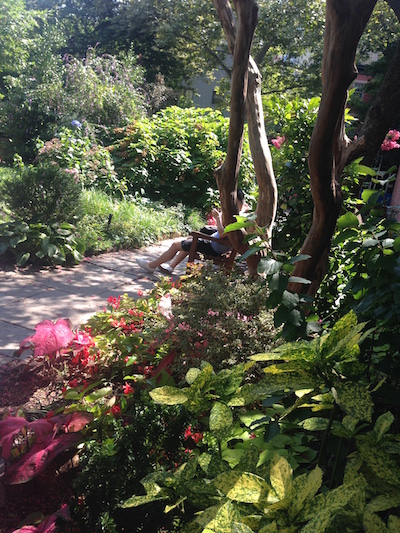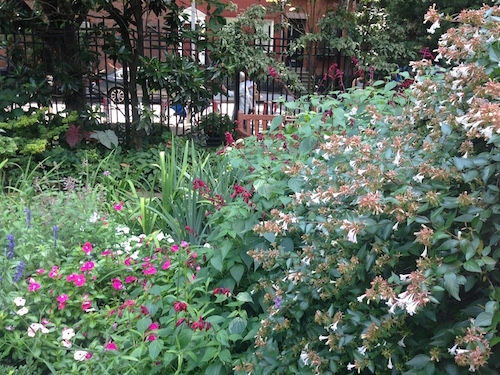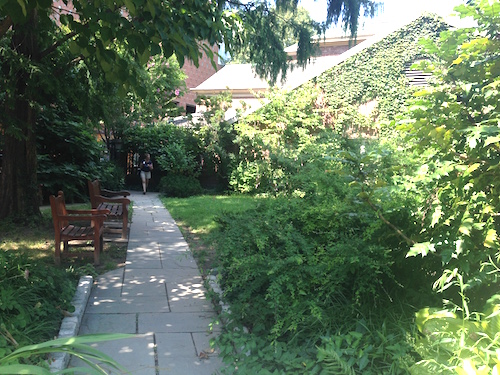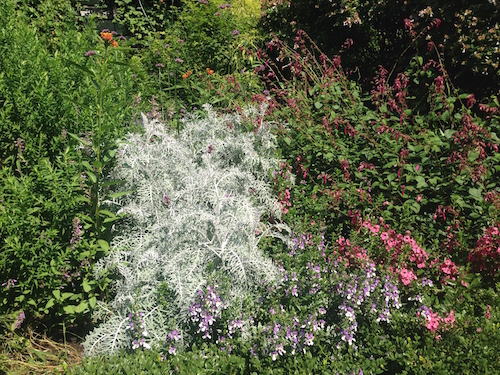When I investigated WNYC Transmitter Park in Greenpoint, Brooklyn back in 2010 it was nothing but a construction site.
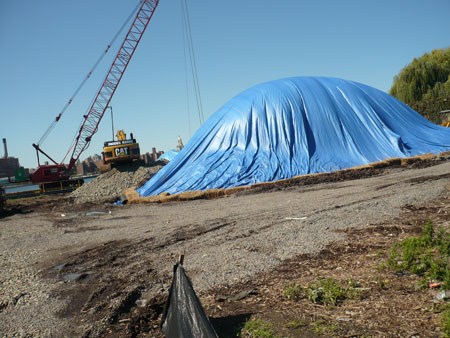
Two years later it opened to the public, transformed into a green waterfront space with excellent views.
Only five years late to the party, I arrived to check it out.
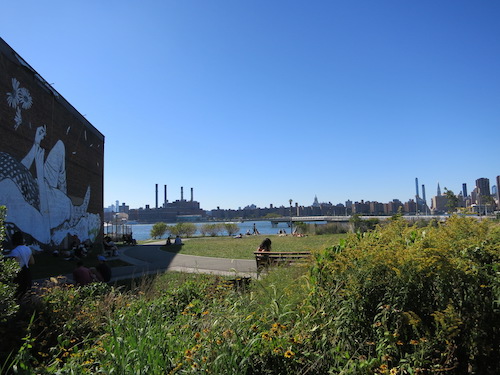
I always like to see landscaping that evokes a woodland or grassland trail.
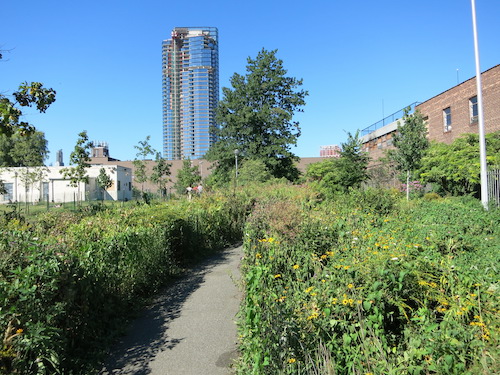
Dominating the park from what would otherwise be a bleak brick wall is a huge mural of a girl with flowers by the artist Faile, part of a "street-art project." (Does "street-art" mean it's temporary? Online sources don't say.) Faile told Patch, "The idea was the timeless theme of 'love me, love me not'—aiming to depict a moment that asks the question of what kind of relationship we have with nature. Are we here to love it and take care of it or not?"
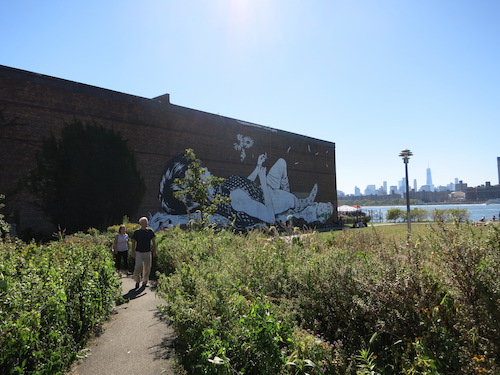
The sheer size of the mural is astounding.
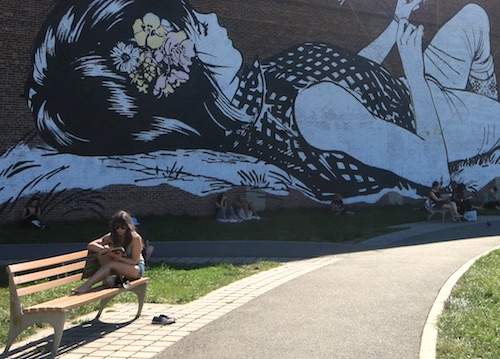
The frog in the painting isn't the only animal in the park. Here's a real one.
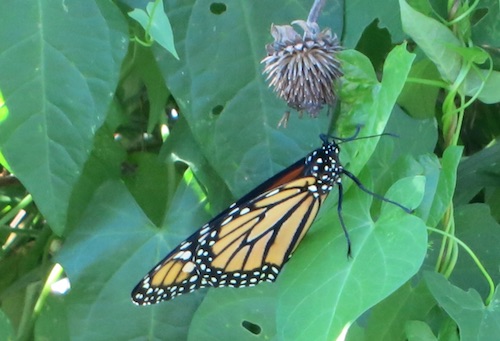
The park is the former home of public radio station WNYC and a ferry terminal. An entry on the website of the New York City Economic Development Corporation's website at the time of the 2012 opening states: "The former WNYC radio broadcasting building was converted into a café." But if that was meant to happen, it hasn't. Dwarfed by a spectacular willow tree, the building is closed up and appears to be just a historical relic.
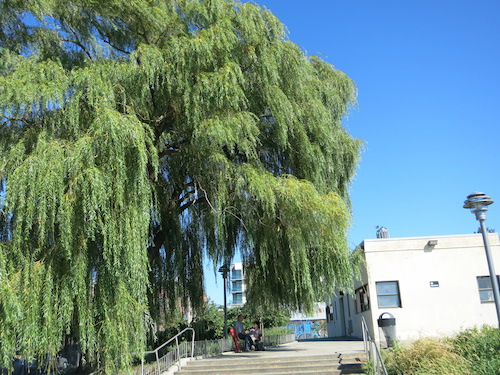
In fact, the Friends of WNYC Transmitter Park (every park needs an advocacy organization these days) has a petition to stop the opening of a bar/café here. The Friends want instead to convert the building into a "botanical learning center surrounded by gardens featuring native species," DNAInfo reported in April.
There are two more reasons to oppose a bar/café within the park. First, there's a small playground.
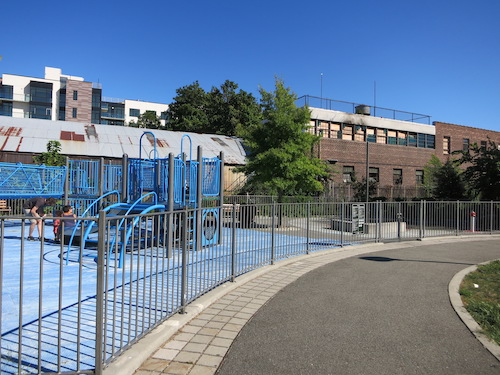
And second, there's already a party boat, the Brooklyn Barge, next door.
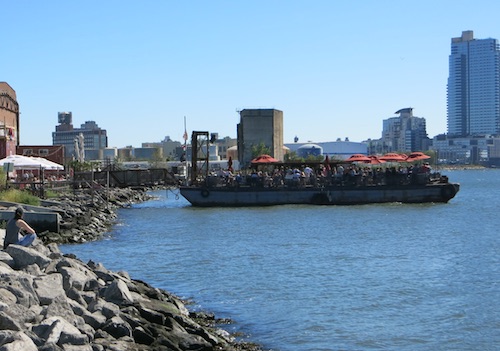
The sign etched into the side of the old transmitter building (with contrast increased for readability) says:
DEPARTMENT OF PLANT AND STRUCTURES
TRANSMITTER HOUSE
RADIO STATION
WNYC
1936
with the names of Mayor F.H. LaGuardia and Commissioner F.J.H. Kracke. LaGuardia's connection to WNYC was a deep one. The station's Wikipedia page shows a photo of him in the studio broadcasting his "Talk to the People" program in 1940. WNYC-AM broadcast from here from 1937 to 1990.
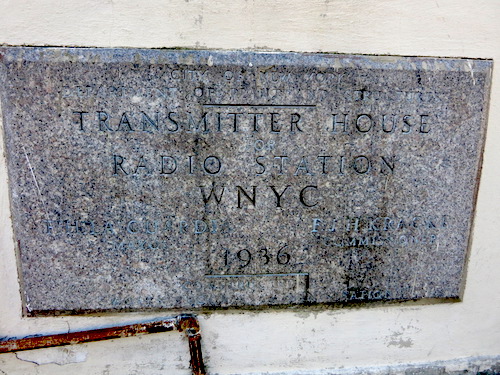
As for Mr. Kracke, the portfolio of his Department of Plant and Structures included bus and trolley transportation along with, evidently, either communications or buildings (or both). Though long defunct, the department lives on in the wall here in Transmitter Park – and in the suspicious smirks of its 1922 women's basketball team.
The park was well used on this warm September weekend…
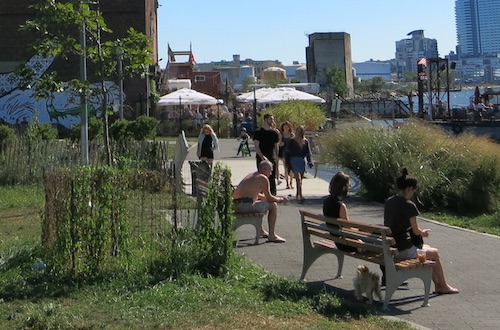
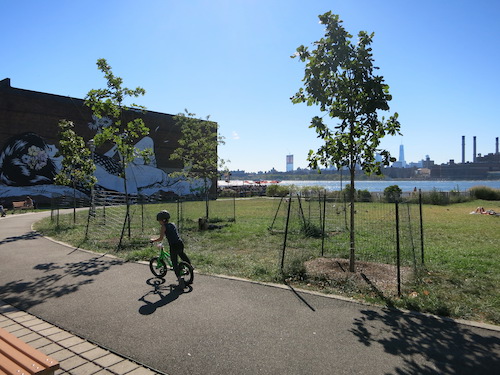
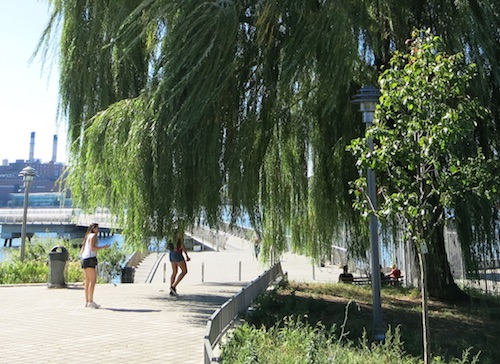
…though only a few were taking the long walk out over the water for a better view of the Manhattan skyline – from the Empire State Building to the UN and the slant-roofed Citicorp Tower.
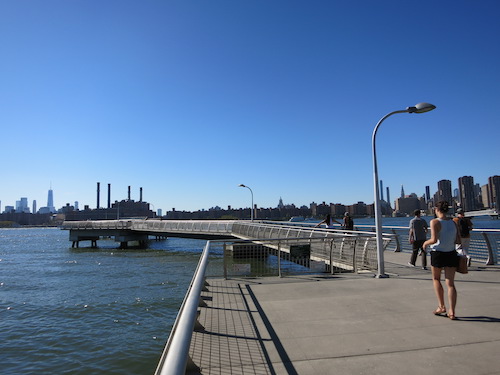
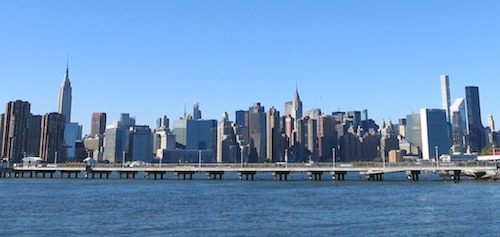
What will we find in Transmitter Park in another five years? Who can say? Does anything ever stay the same in New York City? Or anywhere?
All photos © Jon Sobel, Critical Lens Media
